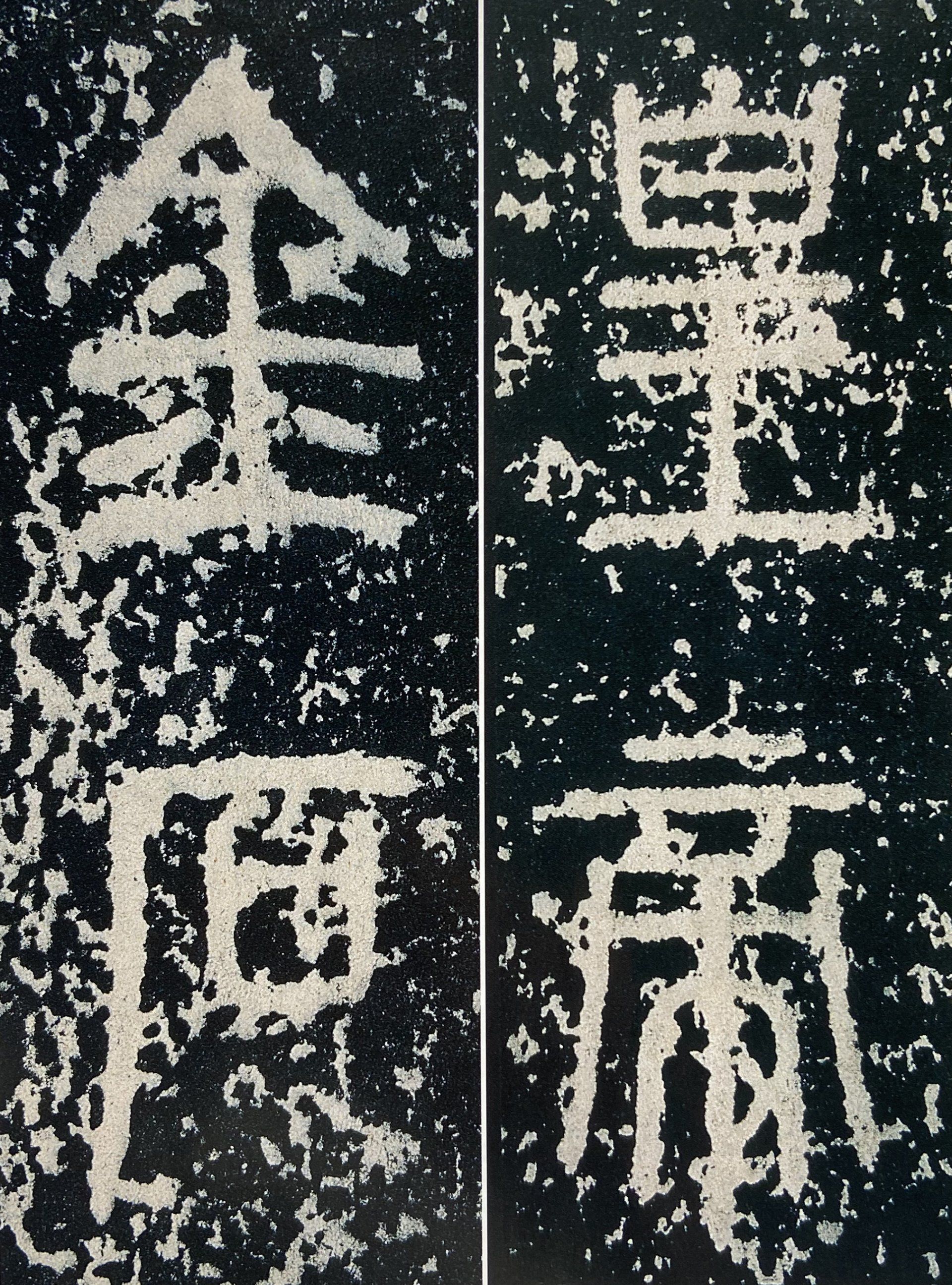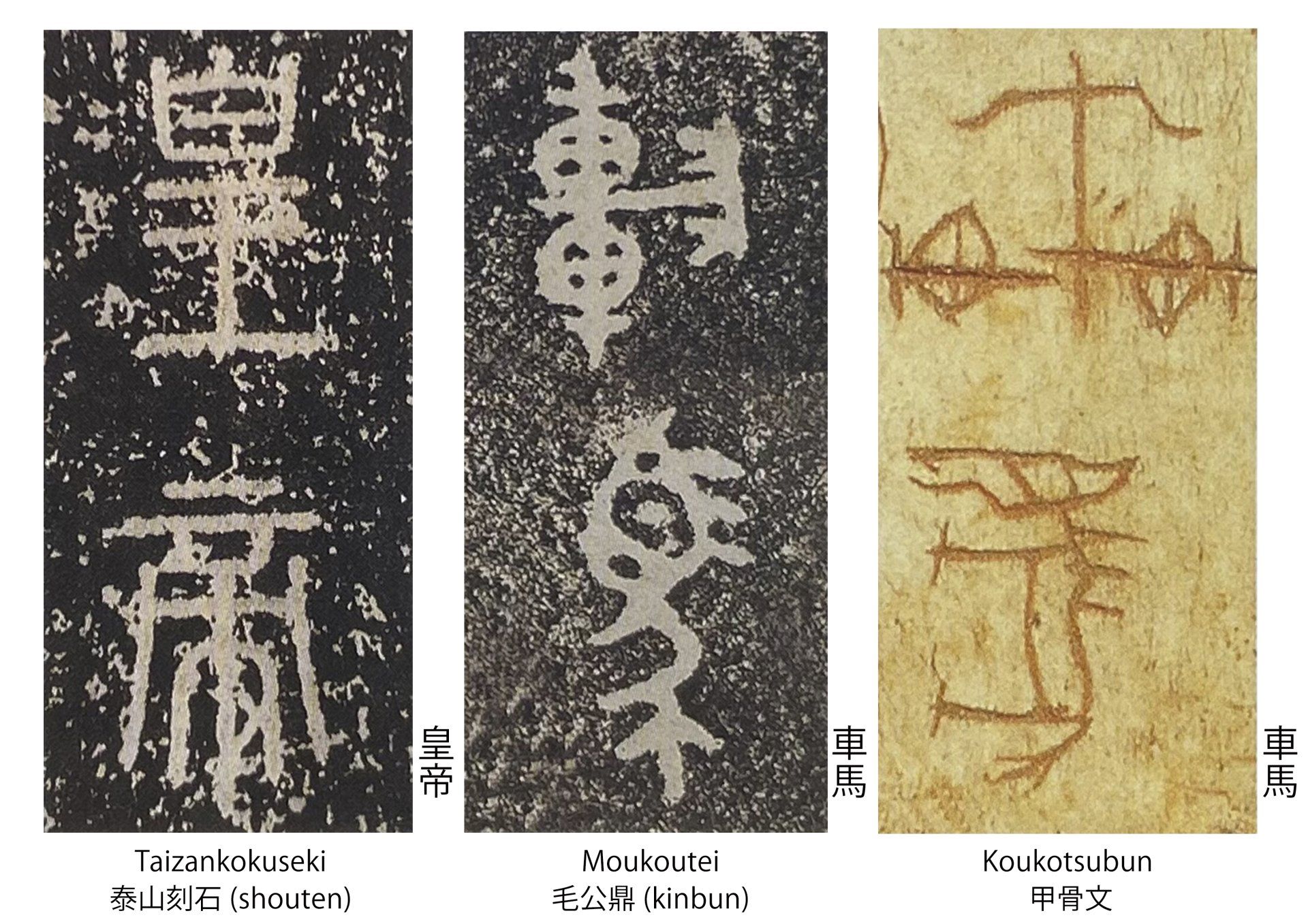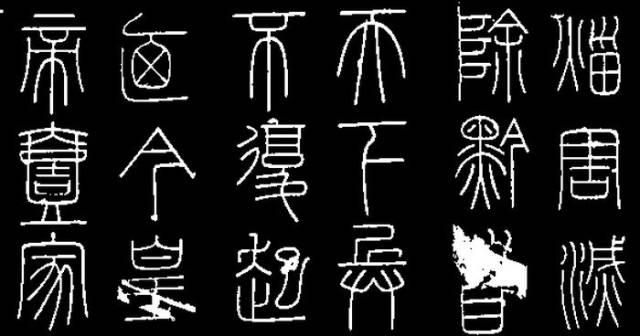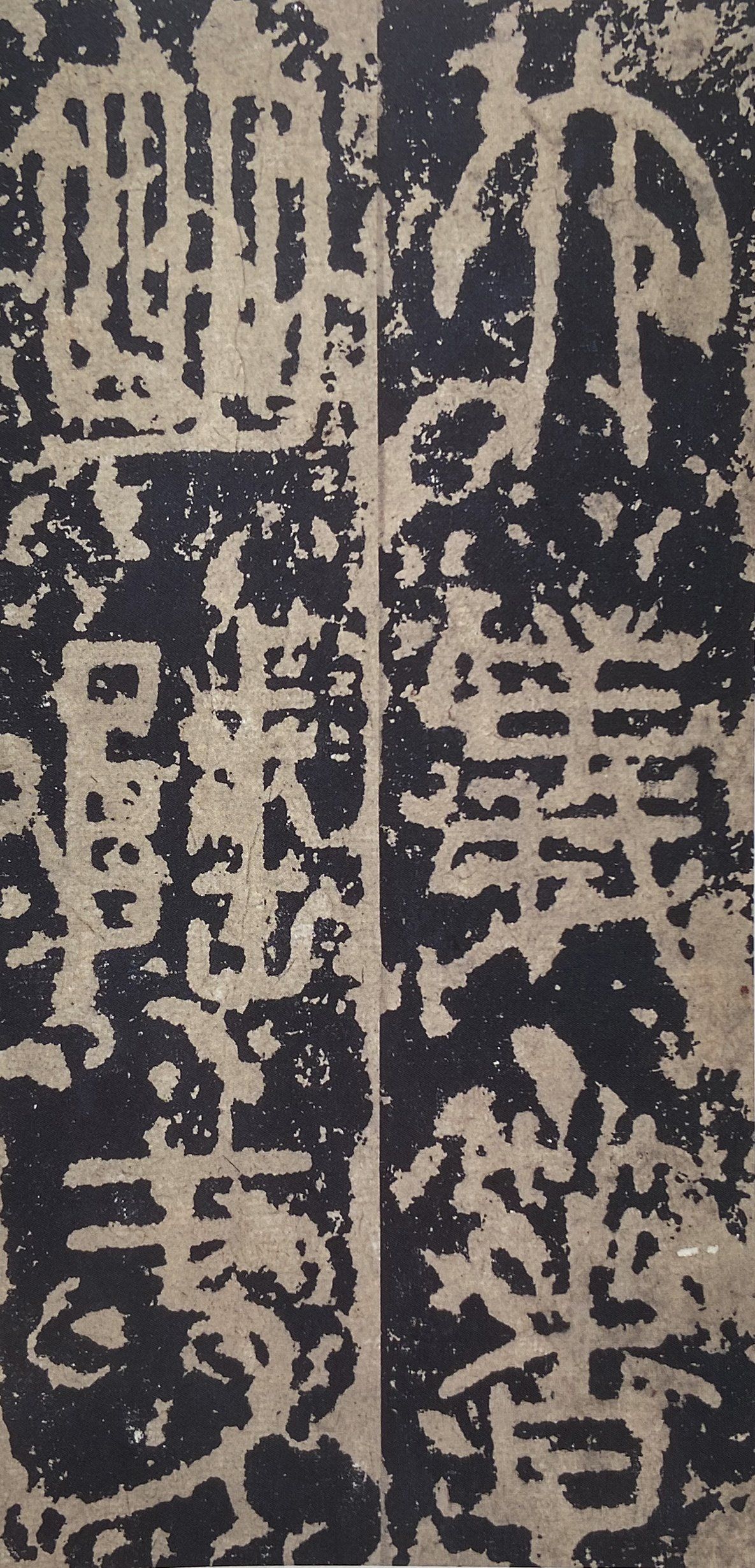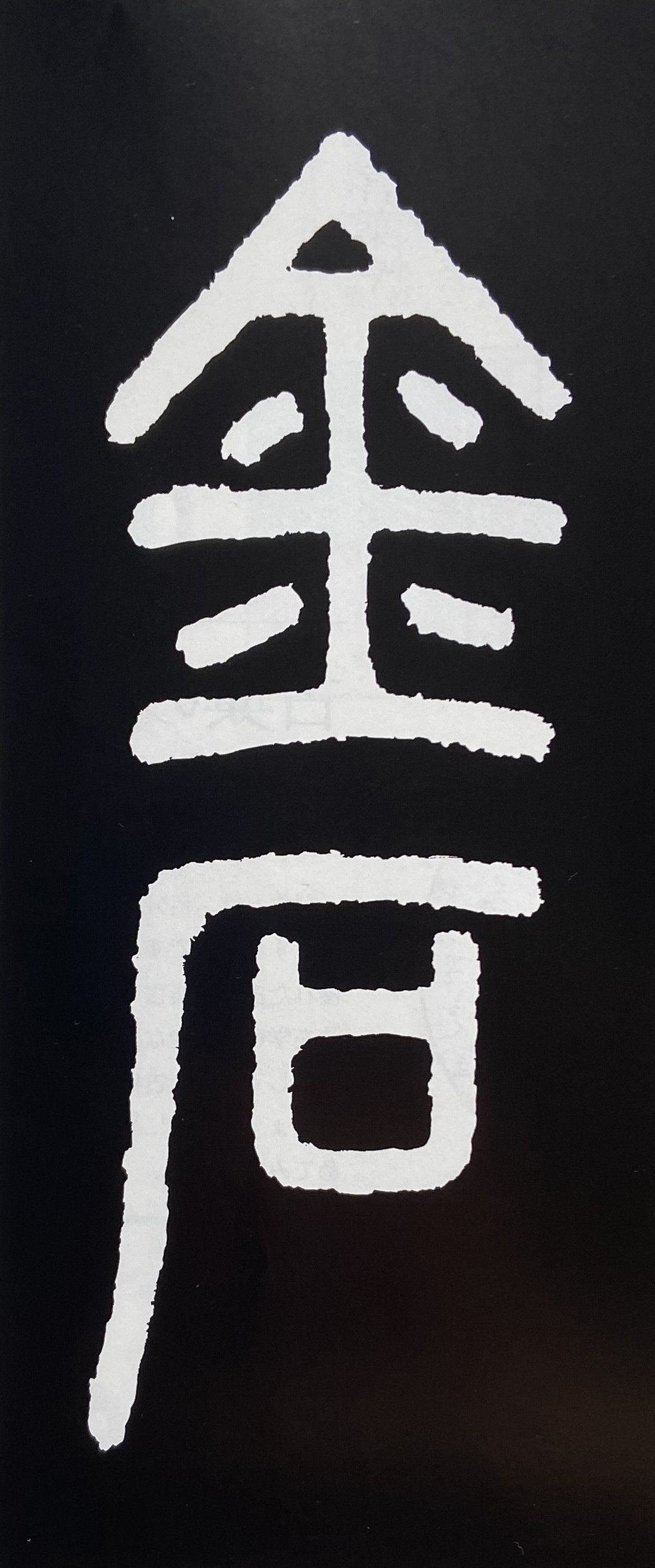Shouten 小篆 or Small Seal script
Although the creation of this style cannot be attributed to a single person, we will consider Qin Shi Huang 秦始皇 (lit. “The First Emperor Qin”) as the first person who favoured the establishment of a more or less standardised writing system within the framework of a reformulation of the political and cultural system of ancient China in order to reinforce imperial reunification. More than 3,300 kanji were regulated to fit a small, rectangular, vertical format called Shouten 小篆 (small seal script), which later led to the creation of the first dictionary of Chinese characters, the Erya 爾雅. It was used for formal purposes, such as official writing, and coexisted with seven other styles during the Qin Dynasty, the so-called Ba Ti 八體 (eight bodies): • Large seal script, or Daiten 大篆. • Small seal script, or Shouten 小篆. • Office script, for scribes, or Reisho 隷書. • Scripture for messenger vouchers, or Ke Fu 刻符, in Chinese. • Worm script, or Chong Shu 蟲書, in Chinese. • Scripture for seals, or Mo Yin 摹印, in Chinese. • Scripture for ornamental tablets, or Shu Shu 署書, in Chinese. • Scripture for inscriptions on weapons, or Shu Shu 殳書, in Chinese.
Seal script remained popular throughout the Han Dynasty, preserved on numerous carved stone slabs, used for official documents or ceremonial purposes, in inscriptions on bronze vessels, and for carving seals. But it is also used in the modern era, not only in the world of calligraphy for calligraphers' seals, the In 印, but also for business or everyday seals (hanko 判子).


